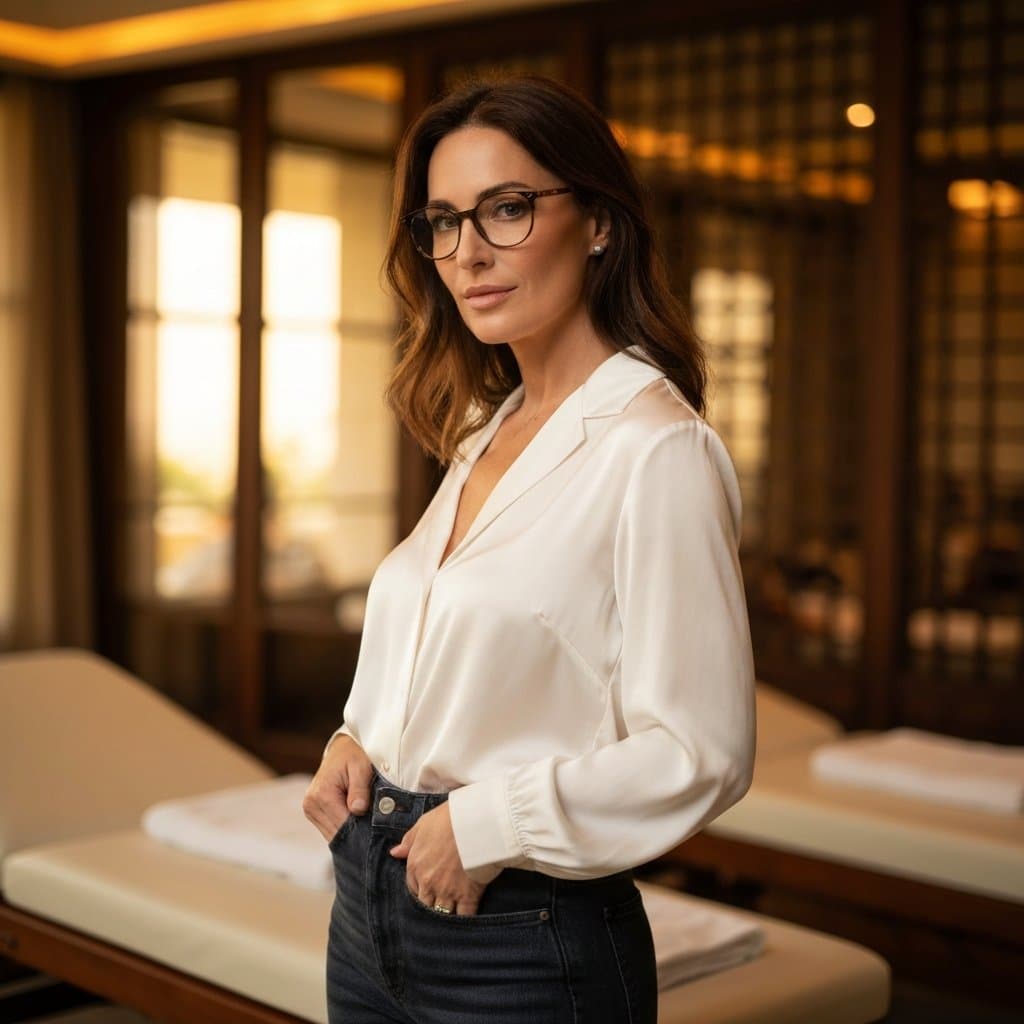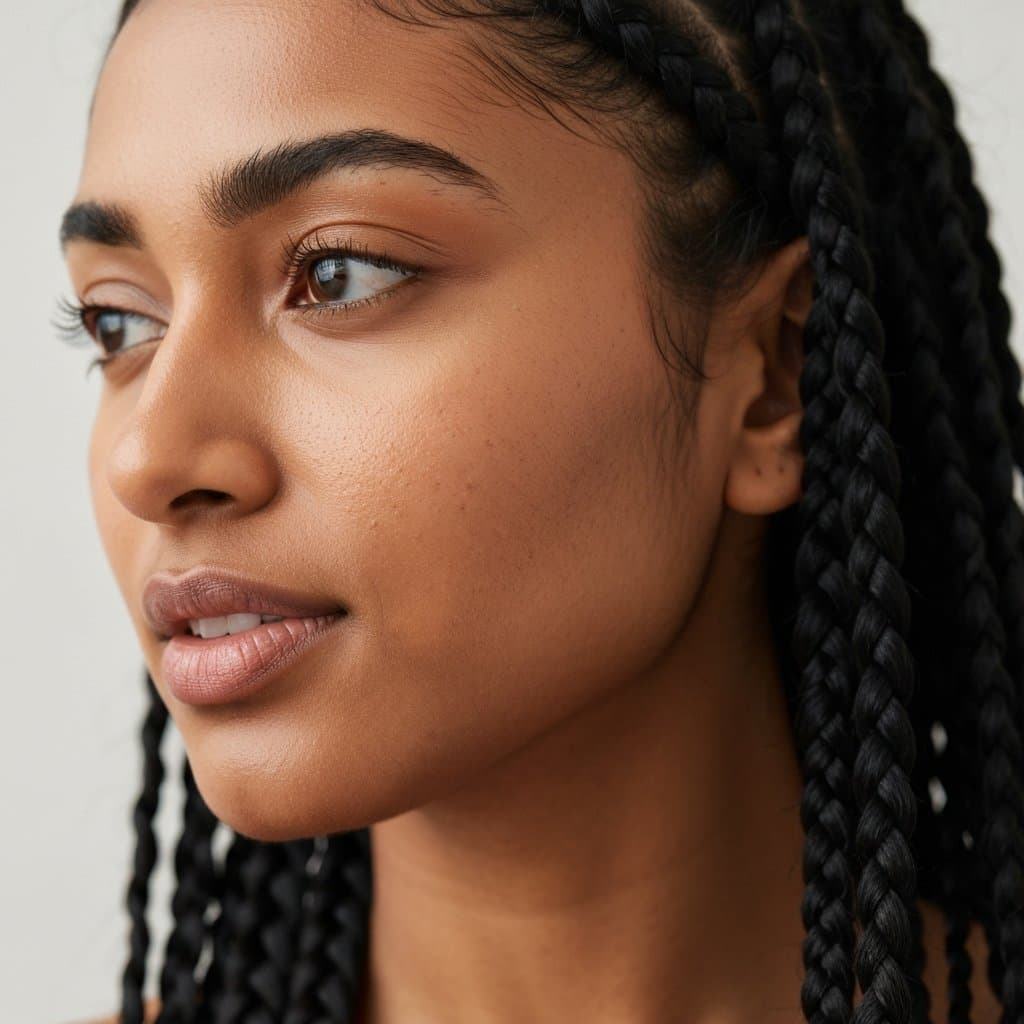Hair Color Guide: Find the Perfect Shade for Your Skin Tone | Pro Stylist Secrets
Your Ultimate Guide to Finding the Perfect Hair Color for Your Skin Tone
Choosing a new hair color is one of the most exciting ways to refresh your look, but the sheer number of options can be overwhelming. From platinum blonde to jet black and every shade in between, how do you know which one will truly complement you? The secret lies not just in your personal preference, but in the science of color theory—specifically, how a hair color interacts with your unique skin tone. Finding the perfect hair color for your skin tone can illuminate your features, make your eyes pop, and give your complexion a radiant, healthy glow. Conversely, the wrong shade can wash you out, appear unnatural, or even accentuate skin imperfections.
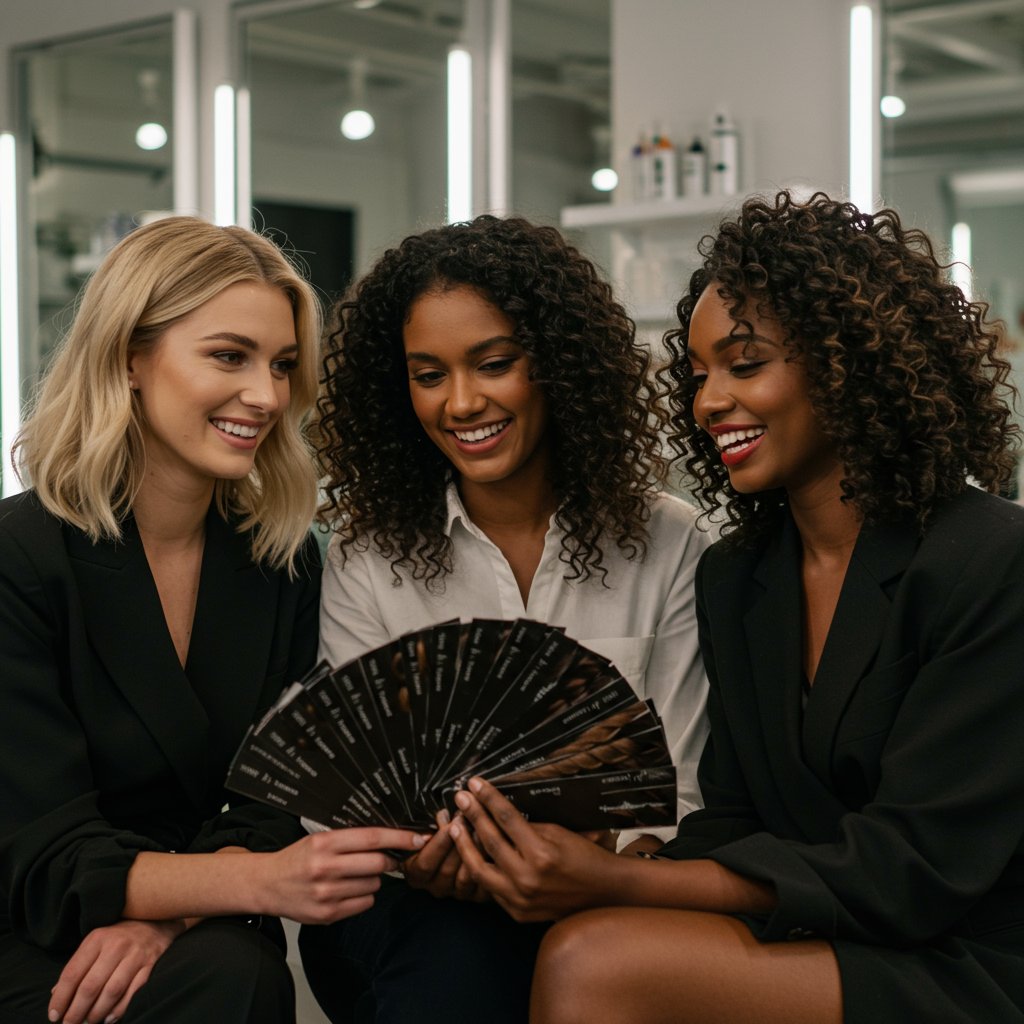
This comprehensive guide is designed to demystify the process. We will walk you through the crucial steps of identifying your skin's undertone, exploring the spectrum of colors that will flatter you most, and understanding how factors like eye color and maintenance play a role in your final decision. Whether you're considering a subtle change or a dramatic transformation, this knowledge will empower you to collaborate effectively with your stylist. An experienced colorist can provide a personalized consultation, but armed with this information, you can step into any professional hair salon with confidence, ready to discover the shade that was made for you.
The Foundation: Understanding Skin Tone vs. Undertone
The first and most critical step in finding your ideal hair color is to understand the nuances of your skin. Many people confuse skin tone with undertone, but they are two distinct elements. Skin tone, also known as your surface tone, is the color you'd describe your skin as—fair, light, medium, tan, or deep. This can change with sun exposure and throughout the year. Your undertone, however, is the subtle, consistent hue beneath the surface of your skin. It never changes and is the key to finding your most flattering hair color.
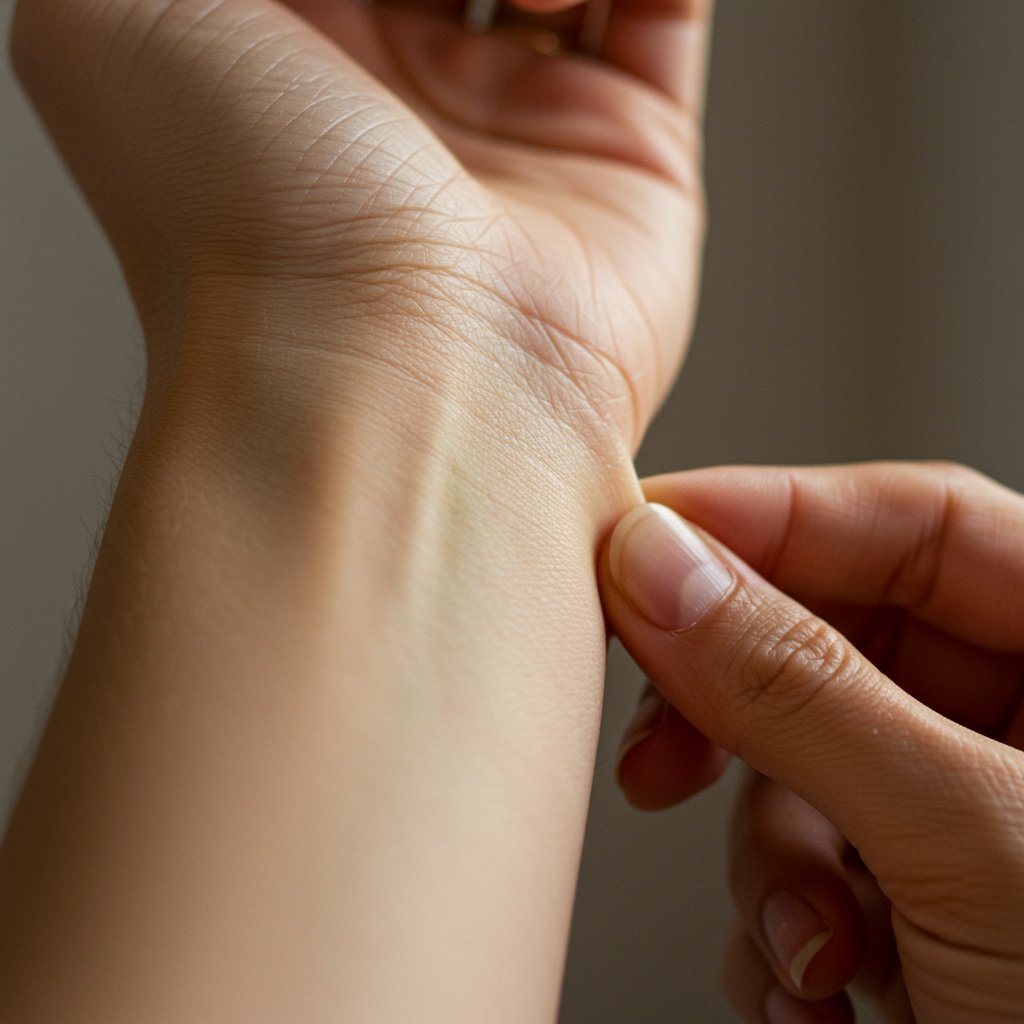
Undertones are generally categorized into three types: cool, warm, and neutral. Cool undertones consist of pink, red, or bluish hues. Warm undertones are characterized by yellow, peachy, or golden hues. Neutral undertones have a balanced mix of both cool and warm hues, often aligning with your surface skin tone. Identifying your undertone is simpler than you might think. A professional stylist can often spot it immediately, but you can perform a few easy tests at home to get a clear idea.
Simple Tests to Determine Your Undertone
- The Vein Test: Look at the veins on the inside of your wrist in natural daylight. If they appear bluish or purple, you likely have cool undertones. If they look greenish, you have warm undertones. If you can't tell for sure or see a mix of both, you probably have neutral undertones.
- The Jewelry Test: Think about which type of jewelry you receive more compliments on. If silver, platinum, and rose gold flatter your skin, you're likely on the cool side. If traditional yellow gold makes your skin look more radiant, you have warm undertones. If you look great in both, you're neutral.
- The White Paper Test: Hold a piece of pure white paper next to your clean, makeup-free face in natural light. If your skin looks pinkish or rosy in comparison, you have cool undertones. If your face appears more yellow or golden, you have warm undertones. If it looks grayish or you can't discern a clear color, you are likely neutral.
Decoding Cool Undertones: The Best Hair Colors
If you've identified yourself as having cool undertones—with hints of pink, red, or blue in your skin—you'll want to choose hair colors that complement this coolness rather than fight against it. The goal is to create harmony. Shades that have cool bases themselves, such as ash, platinum, and jewel tones, will look stunning and natural against your complexion. These colors will brighten your face and prevent your skin from looking ruddy or overly pink.
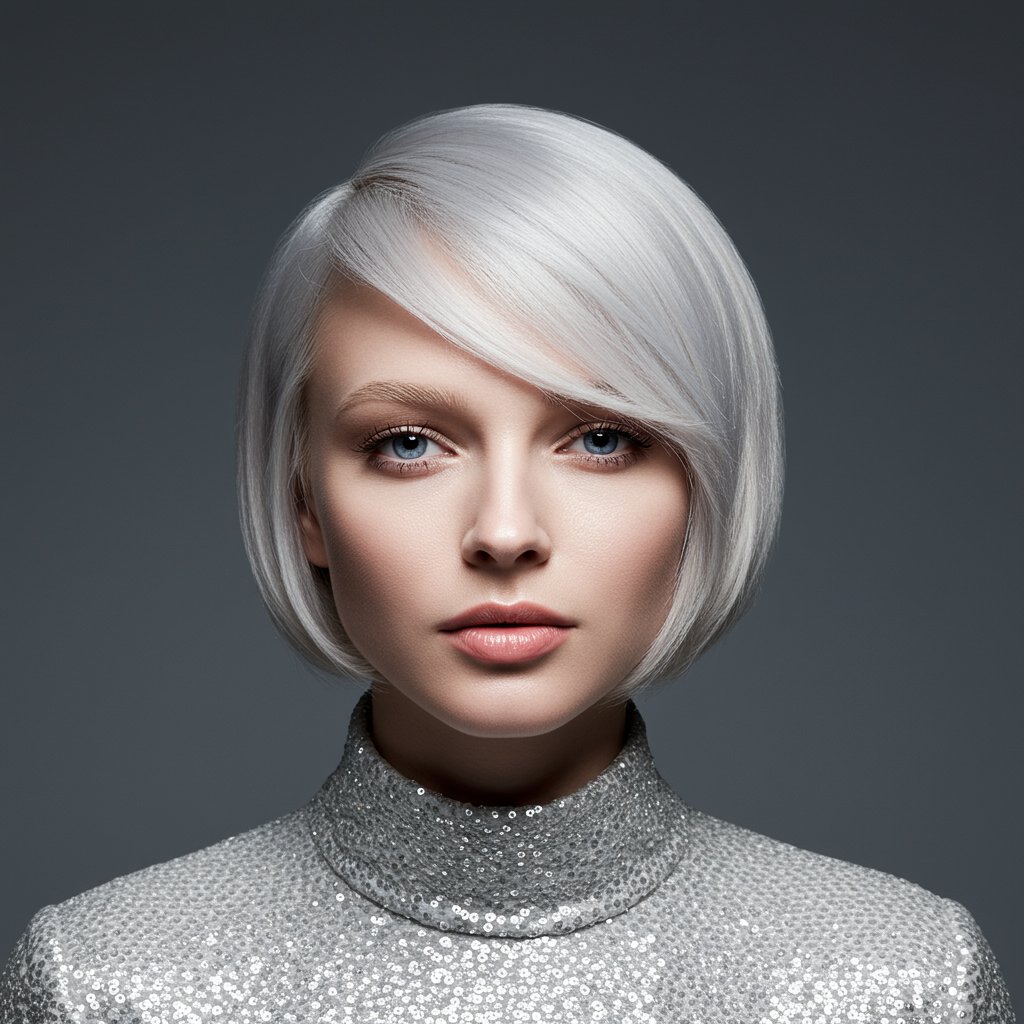
For blondes, think icy shades like platinum, ash blonde, beige blonde, or champagne. These colors lack the yellow or golden tones that can clash with a cool complexion. If you're a brunette, look for cool brown shades like ash brown, mocha, dark chocolate, or rich espresso. These deep, cool browns provide a beautiful contrast without introducing brassiness. For those who love red, opt for true reds with a blue or purple base, such as burgundy, cherry, or deep auburn, instead of coppery or orange-based reds.
When considering more adventurous colors, cool-toned individuals can pull off vibrant blues, purples, and pastel lavenders with incredible style. The key is to avoid shades that are overly golden, honey, or caramel. These warm tones can create a jarring contrast and make your cool skin appear flushed or uneven. When in doubt, look for color descriptions that include words like 'ash,' 'ice,' 'platinum,' or 'cool.'
Embracing Warm Undertones: Your Ideal Shades
Individuals with warm undertones, characterized by a golden, peachy, or yellow glow, look best in hair colors that enhance this natural warmth. Your color palette is filled with rich, earthy, and sun-kissed shades. Choosing a hair color with a warm base will make your skin look luminous and healthy, avoiding any color that could make you appear sallow or washed out. Think of colors that remind you of autumn, honey, and golden sunlight.
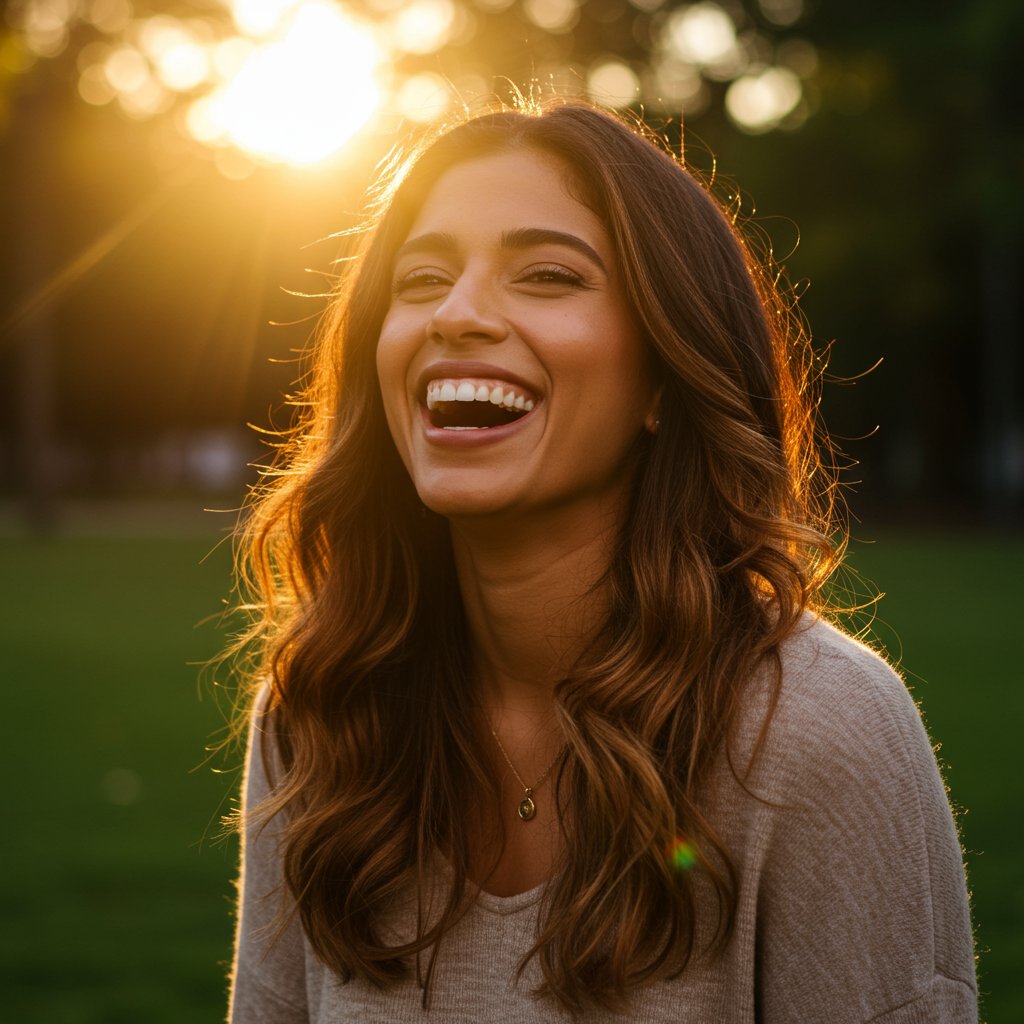
If you dream of being a blonde, golden blonde, honey, caramel, butterscotch, and strawberry blonde will be your best friends. These shades will pick up the golden flecks in your skin and create a radiant, cohesive look. For brunettes, the options are equally gorgeous. Consider warm browns like golden brown, chestnut, mahogany, and chocolate. Adding caramel or honey-toned balayage or highlights can add beautiful dimension and further complement your warm complexion.
Red hair is a fantastic choice for those with warm undertones. Shades like copper, auburn, ginger, and rich russet will look incredibly natural and striking. The key is to lean into the orange and golden bases of these reds. Avoid blue-based reds like burgundy or violet, which can clash with your skin's natural warmth. The goal is to echo the tones already present in your skin, creating a look that is both vibrant and harmonious.
The Best of Both Worlds: Hair Color for Neutral Undertones
Having neutral undertones is like winning the hair color lottery. With a balanced mix of both cool and warm hues in your skin, you have the versatility to pull off a vast spectrum of shades. You can lean either cool or warm without a significant risk of clashing. This flexibility allows you to experiment with trends and change your hair color with the seasons, from a cool, icy blonde in the winter to a warm, golden brown in the summer.
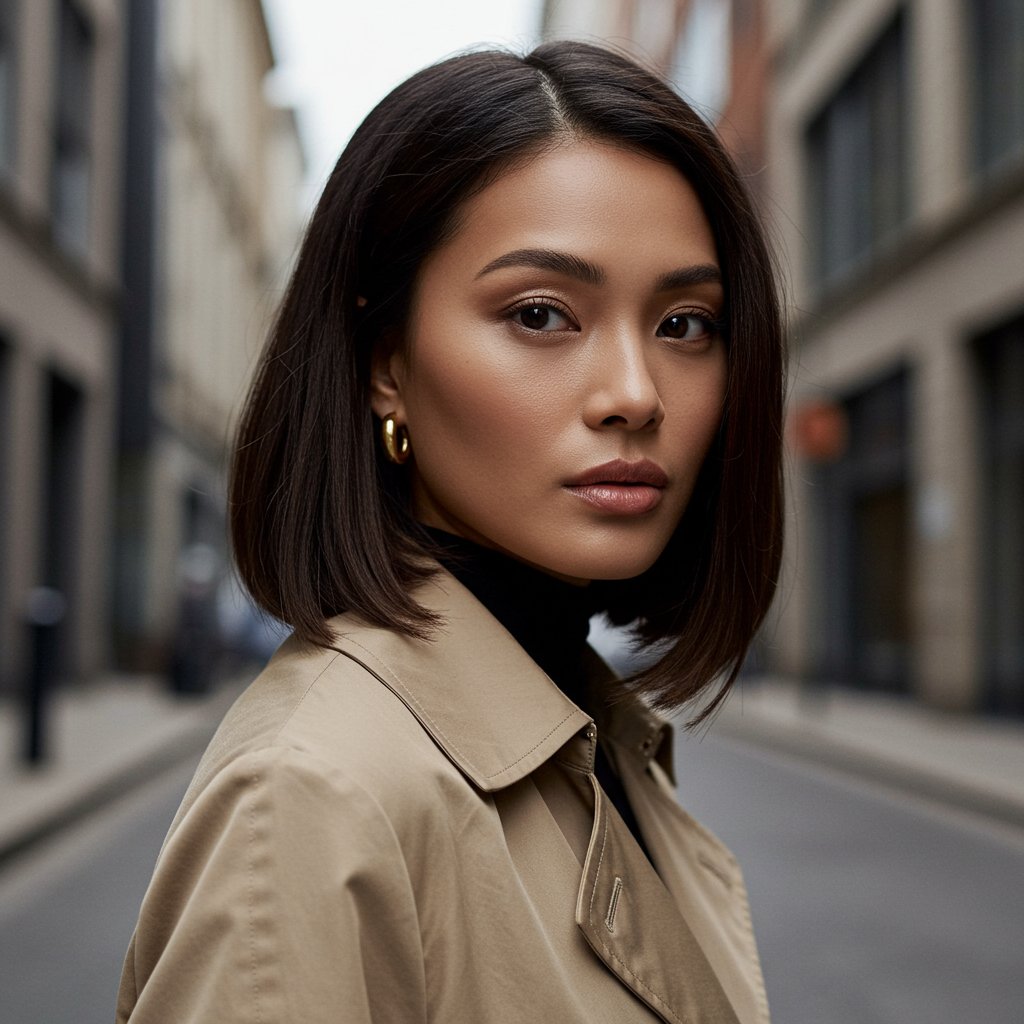
Because you don't have a strong dominant undertone, your main consideration is choosing a shade that you love and that complements your eye color and personal style. You can wear almost any color, but some shades are particularly flattering. For example, a strawberry blonde or a champagne hue can beautifully bridge the gap between warm and cool. For brunettes, a neutral beige brown or a soft mahogany offers a sophisticated look that doesn't lean too heavily in one direction.
While you have many choices, it's still wise to avoid extreme colors on either end of the spectrum unless you're aiming for a high-contrast, edgy look. A color that is too ashy or too golden might not be as flattering as a more balanced shade. A skilled colorist can help you navigate this wide array of options, perhaps by blending cool and warm tones together using techniques like balayage to create a truly bespoke color that is unique to you.
Beyond Undertones: The Role of Eye Color
While skin undertone is the primary factor in choosing a flattering hair color, your eye color is a close second. The right hair shade can intensify the color of your eyes, making them a captivating focal point. Creating either harmony or a striking contrast between your hair and eyes can elevate your entire look from good to unforgettable. A consultation with a professional stylist will always take your eye color into account when formulating your custom shade.
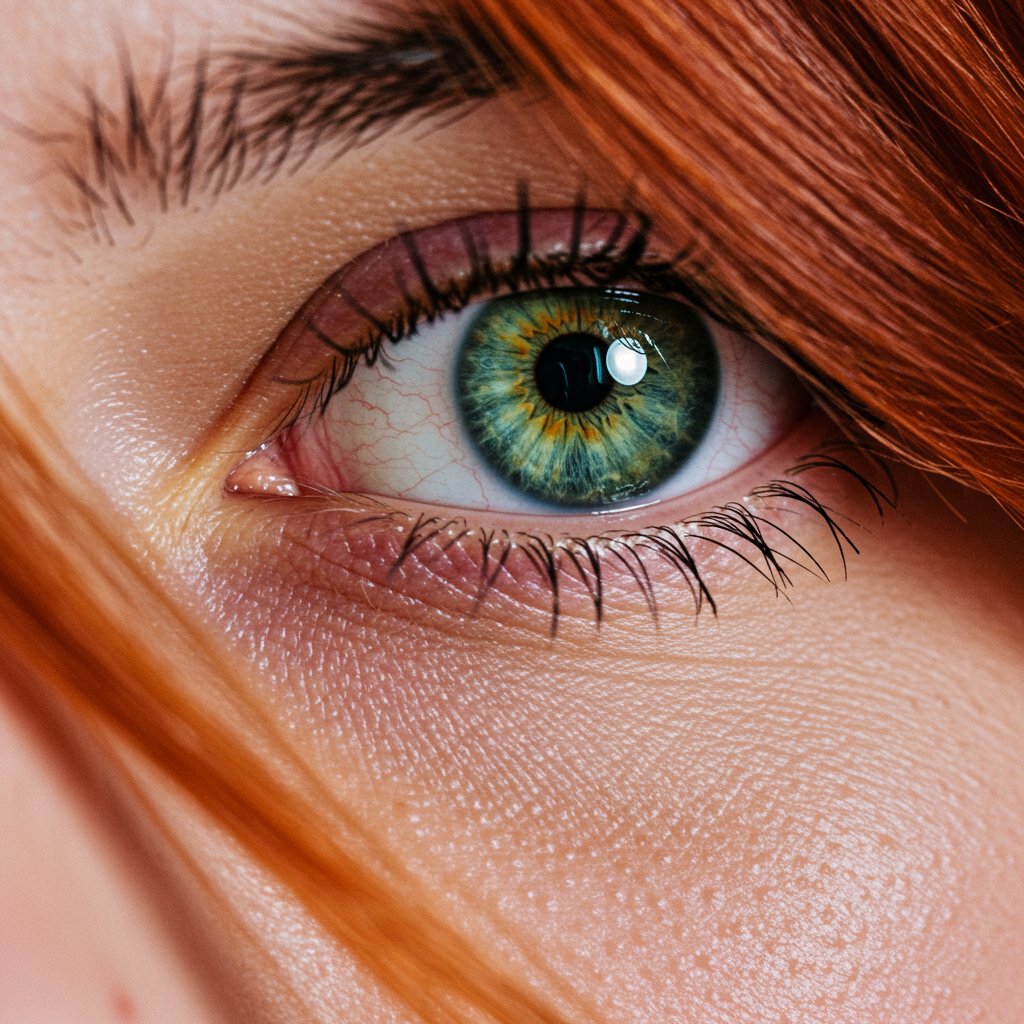
For those with blue or gray eyes, you can go in two directions. To make them appear even icier and more brilliant, choose cool hair colors like platinum or ash blonde. For a dramatic contrast that makes the blue pop, opt for warm shades like golden blonde, caramel, or coppery red. Green and hazel eyes are especially stunning when paired with warm and rich hair colors. Deep chocolate browns, caramel highlights, and particularly red tones—from auburn to vibrant copper—will bring out the green and gold flecks in your eyes.
Brown eyes are incredibly versatile and can be complemented by a wide range of hair colors. To add richness and depth, pair dark brown eyes with deep espresso or chocolate brown hair. To create a softer, more illuminated look, especially with light brown or amber eyes, incorporating caramel, honey, or golden highlights can create a beautiful, warm dimension. The interplay between hair and eye color is a subtle art, and finding the perfect balance can make a world of difference.
High-Impact Techniques: Balayage, Highlights, and Lowlights
Your journey to the perfect hair color isn't just about choosing a single shade; it's also about the technique used to apply it. Modern coloring methods like balayage, highlights, and lowlights offer ways to customize your color, adding dimension, depth, and a natural-looking finish that a single-process color can't always achieve. These techniques allow a stylist to strategically place color to flatter your skin tone, face shape, and haircut.
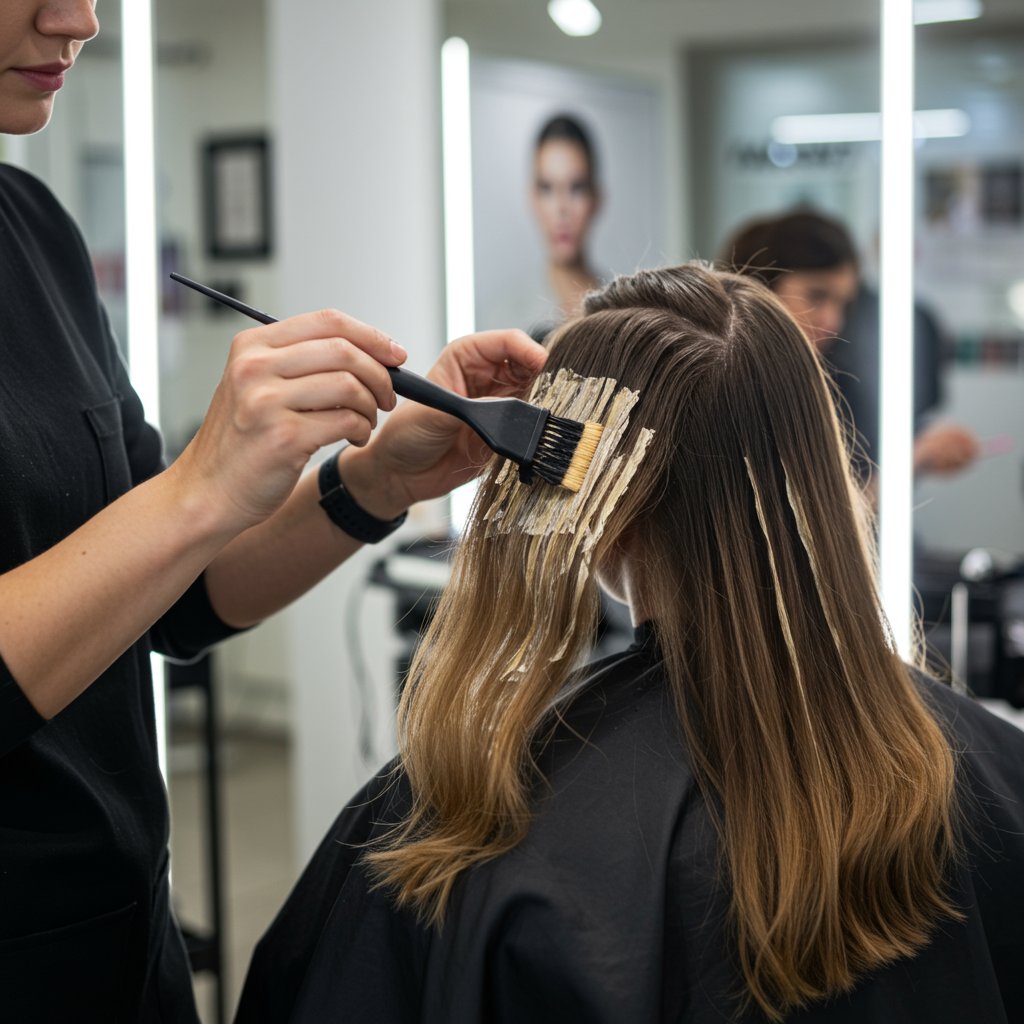
Balayage, a French term for 'sweeping,' involves hand-painting highlights onto the hair for a soft, graduated, sun-kissed effect. This technique is brilliant for blending warm and cool tones, making it a fantastic option for those with neutral undertones or anyone wanting a multi-dimensional look. For instance, a stylist can add golden balayage pieces around the face to warm up a cool brunette base. Traditional highlights, applied using foils, create a more uniform and defined look. The key is to choose a highlight shade that complements your undertone—ashy highlights for cool skin, and golden or caramel highlights for warm skin.
Lowlights involve adding strands of a darker color to create depth and volume. This is an excellent technique for blondes who feel their color is too flat or for brunettes wanting to add richness. By weaving in deeper tones that align with your undertone, a stylist can make your primary color appear more vibrant and dynamic. Consulting with a professional colorist is crucial when considering these techniques, as they have the expertise to place the color in a way that provides the most flattering and beautiful result.
Pro Tips for Maintaining Your Perfect Color
Once you've invested time and money into achieving your perfect hair color, the last thing you want is for it to fade quickly. Proper aftercare is essential to keep your color vibrant, your hair healthy, and to extend the time between salon visits. The first rule of color maintenance is to use products specifically designed for color-treated hair. Regular shampoos can contain harsh sulfates that strip color molecules, leading to premature fading.
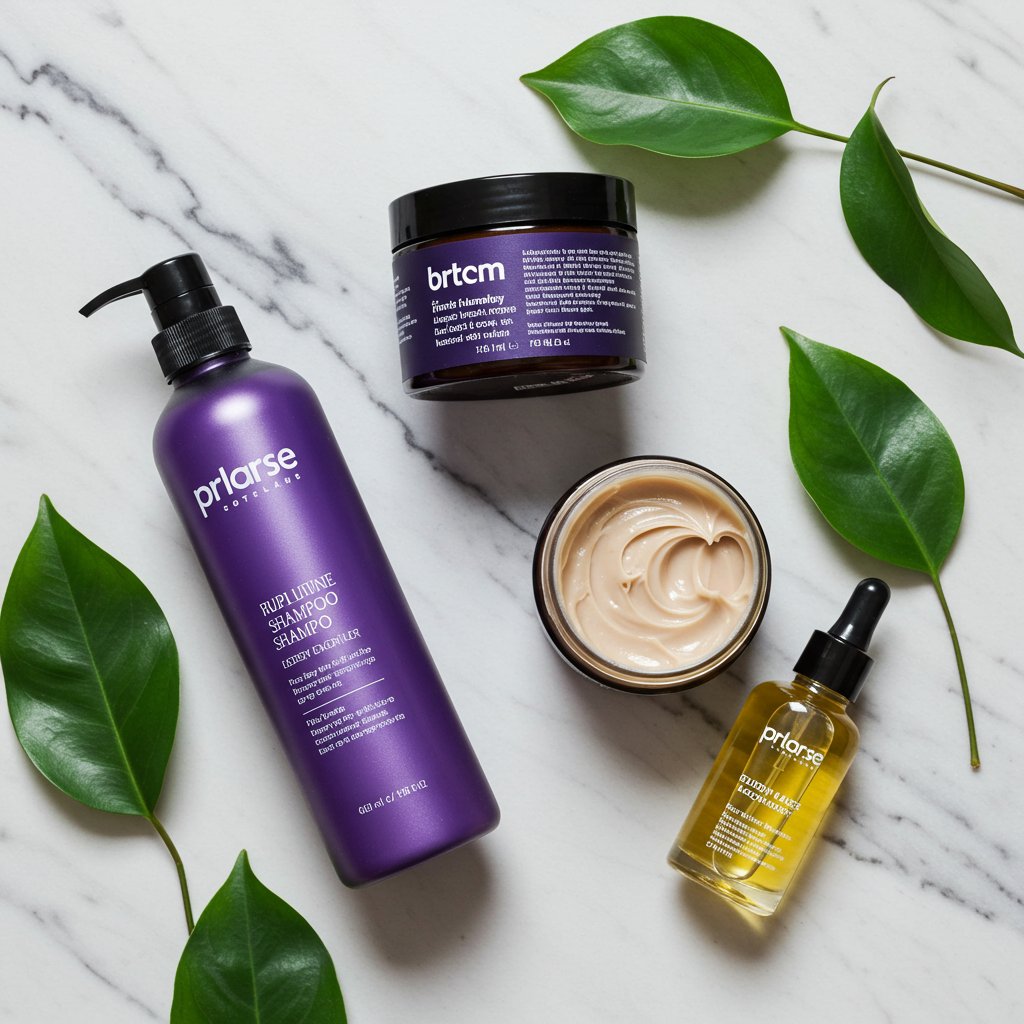
Incorporate a high-quality, sulfate-free shampoo and conditioner into your routine. If you've gone blonde, using a purple or blue toning shampoo once a week can neutralize unwanted brassy or yellow tones. Regular deep conditioning treatments or hair masks are also crucial. Coloring is a chemical process that can leave hair porous and dry, so replenishing moisture with a weekly mask will keep your hair soft, shiny, and less prone to breakage. Heat is another enemy of hair color. Always apply a heat protectant spray before using hot tools like flat irons or curling wands, as excessive heat can dull your shade.
Finally, professional maintenance is key. Schedule regular appointments for root touch-ups or toning glosses. A gloss or glaze treatment is a quick service that can be done between full color appointments to boost shine, refresh your tone, and seal the hair cuticle. These treatments are one of the best-kept secrets to long-lasting, salon-fresh color. By following these maintenance tips, you can protect your investment and enjoy your beautiful, custom hair color for weeks to come.
Frequently Asked Questions (FAQ)
How do I know for sure if I have cool or warm undertones?
While the home tests (vein, jewelry, white paper) are a great starting point, the most definitive way to know is to have a professional consultation. An experienced hair stylist is trained to analyze skin tones and can give you a confident assessment. They can even drape different color swatches near your face to see which ones make your complexion come alive.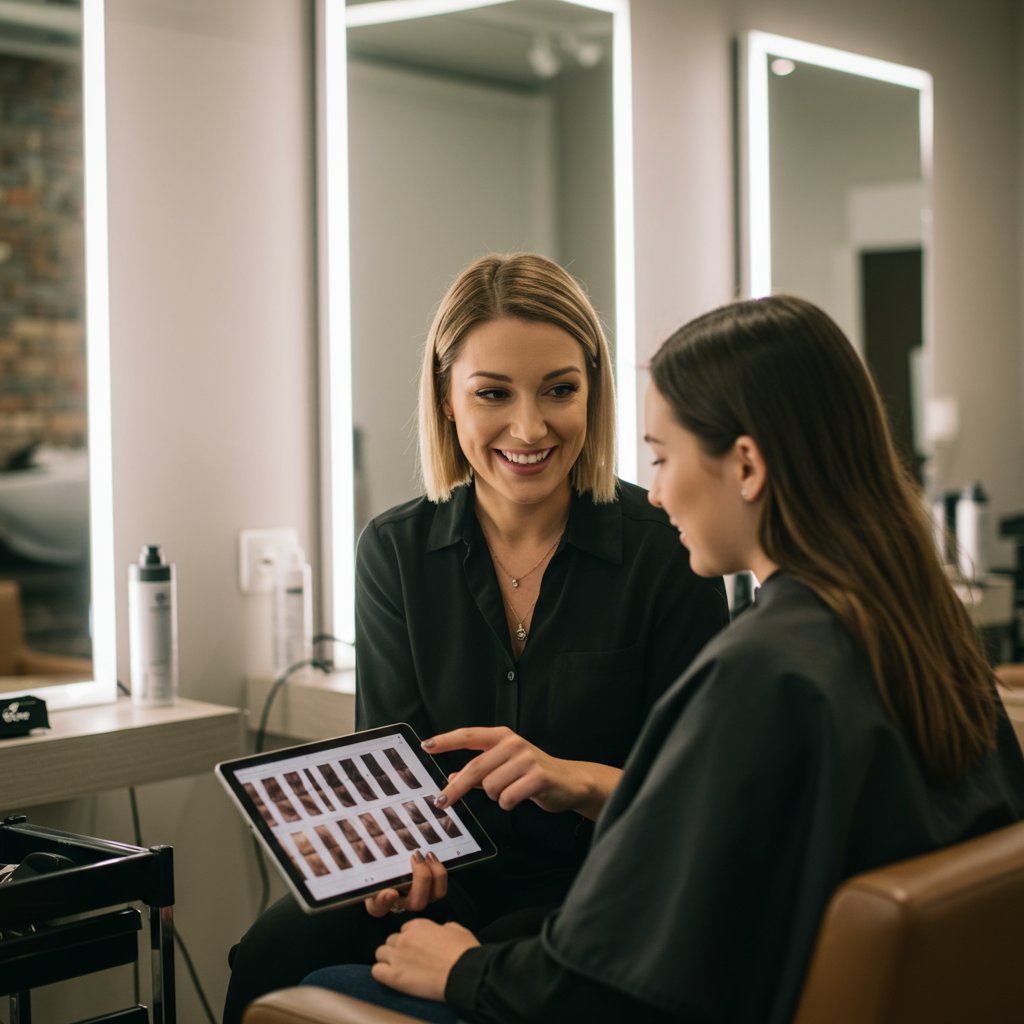
Can I wear a hair color that doesn't 'match' my skin tone?
Absolutely! These are guidelines for finding what is most conventionally flattering, not strict rules. Personal style and confidence are paramount. If you have a cool skin tone but have always dreamed of a fiery copper red, a skilled colorist can make adjustments—perhaps by adding some cooler-toned lowlights or a face-framing piece—to make it work for you. The goal is for you to love your hair.What's the difference between a single process color and highlights?
A single process color applies one shade all over your hair, from root to tip. It's great for covering grays or making a significant color change. Highlights involve lightening specific strands of hair to create dimension and contrast against your base color. Techniques like balayage are a form of highlighting.How often should I get my hair color touched up?
This depends on the type of color service and how fast your hair grows. A single process color that is different from your natural shade will require a root touch-up every 4-6 weeks. Techniques like balayage or ombré are much lower maintenance, as the color is graduated and the roots are often left natural. You may only need a touch-up for these styles every 3-6 months, with a toning gloss in between.What should I do if my hair color turns out brassy at home?
Brassy tones—unwanted yellow, orange, or red hues—are common, especially when lightening hair. The best and safest solution is to visit a professional salon. A stylist can apply a professional-grade toner or gloss to neutralize the brassiness and correct the color. Using an at-home toning shampoo can help manage brassiness, but a professional color correction is often needed for significant issues.Conclusion: Your Path to the Perfect Shade
Finding the perfect hair color for your skin tone is a journey of self-discovery that blends art with science. By understanding your unique undertones—cool, warm, or neutral—you unlock a personalized palette of shades that will enhance your natural beauty, brighten your complexion, and make your eyes sparkle. From the icy platinums that complement cool skin to the golden caramels that illuminate warm skin, the right color can transform your entire look and boost your confidence.
Remember that this guide is your starting point. Factors like eye color, lifestyle, and maintenance commitment also play a vital role in your final decision. The most crucial step in this process is to collaborate with a trusted, professional colorist. They possess the technical skill and artistic eye to bring your vision to life, customizing not just the shade but the application technique to create a look that is uniquely and beautifully you. Book a consultation today and take the first step toward discovering your most radiant self.
